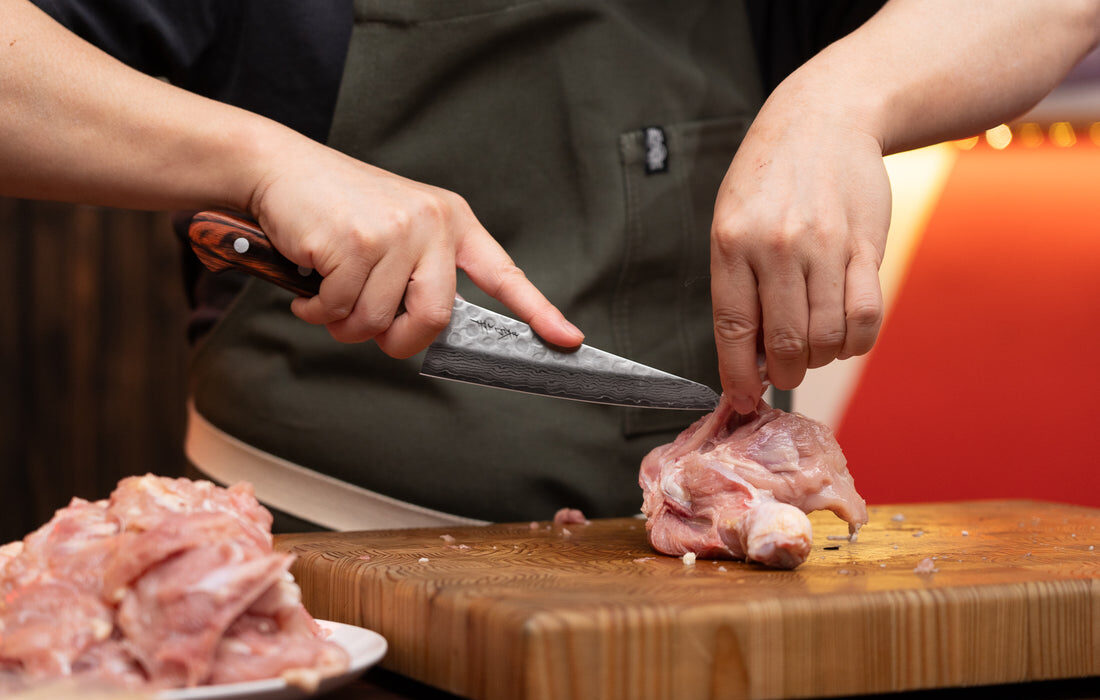When it comes to selecting the perfect knife for your kitchen, understanding the German knife hardness scale is crucial. This scale not only determines the durability of a knife but also influences its performance in various culinary tasks. Whether you’re a professional chef or a home cooking enthusiast, knowing about this scale can significantly enhance your culinary experience.

What is the German Knife Hardness Scale?
The German knife hardness scale, often measured using the Rockwell scale, is a method to determine the hardness of steel used in knife blades. It is a critical factor in assessing the quality and longevity of a knife. Typically, German knives fall within the range of 56 to 58 HRC (Hardness Rockwell C), which balances toughness and sharpness, making them ideal for both professional kitchens and home use.
Why Knife Hardness Matters
The hardness of a knife blade influences several important factors:
- Edge Retention: Harder knives retain their edge longer, reducing the need for frequent sharpening.
- Durability: A harder blade is more resistant to wear and tear.
- Sharpness: Harder knives can achieve and maintain sharper edges.
Edge Retention
One of the primary advantages of knives with higher hardness is their ability to maintain a sharp edge over time. This is particularly beneficial in busy kitchens where time is of the essence, and frequent sharpening is not practical.
Durability
Durability is another critical aspect affected by the knife’s hardness. A harder blade can withstand the pressures of daily use and resist damage more effectively. This is especially important for kitchen professionals who rely on the consistent performance of their tools.
Sharpness
While a harder knife can achieve a finer edge, it also requires more skill to sharpen. However, the payoff is a blade that slices through ingredients with ease, offering precision and efficiency in every cut.
Comparing German and Japanese Knives
While both German and Japanese knives are renowned for their quality, they differ significantly in terms of hardness. Japanese knives typically have a higher hardness rating, often exceeding 60 HRC. This makes them incredibly sharp but also more brittle compared to their German counterparts. Understanding these differences can help you choose the right knife for your specific needs. For more on this topic, check out our German knife sets for beginners.
The Role of Steel Composition
The type of steel used in a knife’s construction plays a significant role in determining its hardness. German knives often use high-carbon stainless steel, which provides a balanced mix of hardness, corrosion resistance, and ease of maintenance.
High-Carbon Stainless Steel
This type of steel is favored for its ability to hold an edge while resisting rust and stains. It offers the best of both worlds in terms of performance and durability, making it a popular choice in German knife manufacturing.
How to Test Knife Hardness
Testing the hardness of a knife involves using a specialized tool that applies pressure to the blade and measures the indentation. While this is typically done by manufacturers, it is useful for consumers to understand the process to make informed decisions.
Rockwell Hardness Test
This test measures the depth of penetration under a large load compared to the penetration made by a preload. The resulting number on the Rockwell scale indicates the knife’s hardness.
Common Myths About Knife Hardness
There are several misconceptions about knife hardness that can lead to confusion:
- Harder is Always Better: While hardness is important, it must be balanced with other factors such as toughness and edge retention.
- All Knives are the Same: Different knives are designed for different purposes, and their hardness reflects this.
Maintaining Your German Knives
Proper maintenance is essential to preserving the hardness and performance of your knives. Regular honing and appropriate storage can extend the life of your blades. For more tips, visit our guide on honing German knives.
Choosing the Right Knife for Your Needs
When selecting a knife, consider your cooking style and the types of tasks you commonly perform. A knife with the appropriate hardness will enhance your efficiency and enjoyment in the kitchen. For insights into selecting the best knives, explore our article on best German knives for home cooks.
The Legacy of German Knives
Germany has a rich history of knife making, with regions like Solingen known as the ‘City of Blades’. This legacy contributes to the high standards associated with German knives today. For more on the historical context, see this informative piece on the legacy of Solingen.
Conclusion: The Impact of Knife Hardness
Understanding the German knife hardness scale is essential for anyone serious about cooking. It not only influences a knife’s performance but also its longevity and ease of maintenance. By choosing the right hardness, you ensure that your knife remains a reliable tool in your culinary endeavors.

FAQs
What does the hardness number mean?
The hardness number, measured on the Rockwell scale, indicates the knife’s resistance to deformation. Higher numbers mean harder blades.
How often should I sharpen my German knife?
This depends on usage, but typically, a German knife can maintain its edge for several weeks with regular honing.
Is a harder knife always better?
Not necessarily. While harder knives retain sharpness longer, they can be more brittle. It’s important to balance hardness with toughness for durability.
This article contains affiliate links. We may earn a commission at no extra cost to you.


